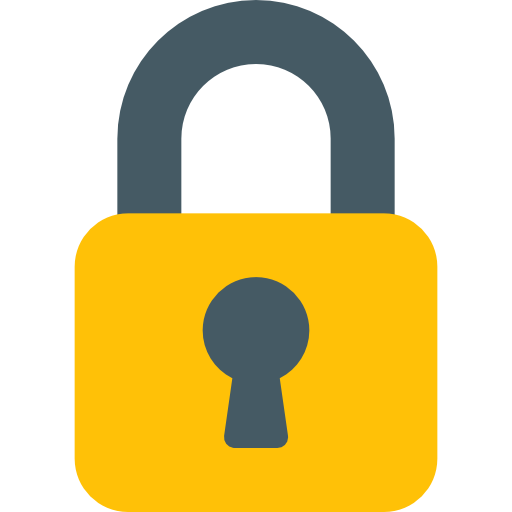It’s fascinating to explore the ongoing battle between physical mail and email for your attention. In today’s fast-paced digital age, I often find myself questioning which form of communication really makes a lasting impression. While emails can flood your inbox in seconds, there’s something about receiving a tangible letter that can’t be overlooked. Join me as I explore the nuances of both mediums and help you decide which one truly captures your interest in this information-driven world.
The Rise of Email
For many of us, email has completely transformed the way we communicate. It offers an easy and efficient platform to quickly connect with friends, family, and colleagues without the hassle of physical delivery. When I think about the convenience of digital communication, I often find myself picturing how much time
Convenience of Digital Communication
One of the main draws of email is the level of convenience it offers. I can compose a message in seconds, attach files or images, and hit send without getting off my couch. You can check your inbox anytime, anywhere, giving you the flexibility to manage personal and work communication around your schedule. This level of accessibility means I rarely miss a message, and it’s a game-changer for staying connected in a fast-paced world.
The Speed Factor
Any time I need to send urgent information, I turn to email because it gets where it needs to go within milliseconds. Unlike physical mail that can take days or even weeks, email provides instant delivery. You can send a message and know that someone on the other end has received it almost immediately, whether they are in the same city or across the globe. This instantaneous communication allows me to collaborate quickly, resolve issues on the fly, and stay informed about important matters in real-time.
In fact, the impact of speed in email communication can’t be overstated. In our fast-moving society, businesses that rely on rapid communication can gain a significant competitive advantage. I often find that when making decisions, the ability to quickly exchange thoughts in an email thread puts me ahead of the curve. Email does not just facilitate communication; it can also drive results and keep you in the loop, all while reinforcing relationships you build in professional and personal contexts.

The Enduring Appeal of Physical Mail
The charm of physical mail continues to captivate my attention, even in this digital age where email often reigns supreme. There’s something uniquely satisfying about receiving a tangible piece of correspondence in my mailbox—a world of possibilities unfolds as I tear open an envelope. It’s not just the message inside that matters; it’s also the experience that comes with handling something real. And let’s be honest: a beautifully crafted greeting card or a handwritten note can speak volumes about thoughtfulness and sentiment. I find that physical mail often carries a more personal touch than a standard email, giving you the feeling that someone took the time to truly connect with you.
Tangibility and Personal Touch
One of the standout features of physical mail is its tangible nature. When I hold a letter or a postcard in my hand, there’s a sense of connection that emails simply can’t match. The weight of the paper, the texture of the ink, and even the scent of the envelope can evoke memories and feelings that we often overlook in our digital interactions. This experience of physicality can elevate the message, making it feel more significant and meaningful.
The Element of Surprise
Tangibility aside, the element of surprise that comes with receiving physical mail can be exhilarating. When you check your mailbox and discover something unexpected—a surprise birthday card or a handwritten letter from a friend—it creates an instant feeling of joy and excitement. You never know what you might find in that stack of envelopes, making the moment more thrilling compared to the predictable nature of emails that flood our inboxes daily.
And it’s this element of surprise that can stir your emotions in a way that emails often fail to do. Each piece of mail tells a story, whether it’s an invitation to a special event or a thoughtfully written apology. The anticipation of opening a letter brings a unique thrill, one that often prompts a smile or a sense of nostalgia. In a world where digital communication is the norm, discovering a handwritten note feels like uncovering a hidden treasure—a delightful reminder that someone out there is thinking of you.
Attention-Grabbing Techniques
If you’re trying to decide between physical mail and email, it’s necessary to understand how each can capture attention. The way I see it, direct mail offers a tactile experience that emails simply can’t match. From the weight of the envelope to the texture of the paper, these elements can evoke feelings of trust and importance. According to 5 Direct Mail Statistics That Prove Direct Mail Is Worth It – Lob, consumers are often more inclined to respond to tangible mail. It’s interesting to note that the sensory experience of receiving a letter can create a lasting impression, making it harder to ignore compared to an inbox that’s overflowing with emails.
Subject Lines vs. Envelopes
Subject lines in emails often serve as the first line of defense to grab your attention. Crafting a strong, compelling subject line can determine whether I decide to open an email or click delete. In contrast, an envelope’s unique design and the promise of handwritten elements can pique my curiosity before I even tear it open. A personalized touch, such as addressing me by name, can significantly boost the likelihood of opening a physical mail piece, while emails can sometimes feel generic and automated.
Design and Presentation
Around the envelope or email design, the adage “presentation matters” holds true. Colors, font choices, and imagery play significant roles in catching the eye. I find that mail pieces with bright colors or intriguing images often draw me in, while emails can get lost in the monotony of my inbox. Good design becomes even more compelling when paired with a clear and engaging call to action, whether it’s on a flyer or highlighted in bold within the email body.
Indeed, the presentation of your mail can greatly influence your success in capturing attention. Integrating bold visuals, an organized layout, and appealing colors into your physical mail enhances the experience and increases the chance of engagement. On the other hand, you can achieve similar effects through creatively designed email templates that offer more than just text. However, at the end of the day, the challenge lies in making that first impression, whether through the crisp sound of an envelope opening or the visual intrigue of an email subject line. Both mediums can be effective, but striking the right balance in design can be the key to standing out in today’s digital age.
Audience Preferences
To understand whether physical mail or email garners more attention today, it’s necessary to consider audience preferences. People’s inclination towards one medium over the other often depends on various factors like age, lifestyle, and familiarity with technology. For example, some individuals may appreciate the tangible feel of a postcard or a handwritten letter, while others might find the instant nature of email to be more appealing to their fast-paced lives. Knowing your audience and their preferences can significantly impact how effectively your message is conveyed.
Demographics Matter
Behind every choice between physical mail and email, demographics play a significant role. Younger audiences who grew up in a digital age tend to be more comfortable with emails and digital communications, as they enjoy the immediacy and accessibility it provides. Meanwhile, older generations might prefer physical mail for its nostalgic value and tangible existence. This difference in comfort levels can influence how you choose to engage with your audience.
Context Influences Choice
Between the choice of sending an email or a physical letter, the context of your message is also a major influencer. Different situations call for different methods of communication. For instance, if you’re inviting someone to a wedding or important life event, a beautifully crafted invitation in the mail can evoke a sense of importance and personal touch. Conversely, if you’re coordinating a quick meeting or sending out a reminder, an email is more effective for its speed and convenience.
For instance, if you were to consider sending a birthday greeting to a close friend, a heartfelt handwritten card can feel much more personal than a text or an email. This kind of context—where emotion and significance play a major role—often dictates how effectively your message reaches and resonates with your audience. Knowing when to choose one over the other can significantly enhance how your audience perceives your intention, leading to a better connection and response.

Cost Considerations
Comparing Mailing Costs
By evaluating different types of communication, I find that cost can be a major factor in deciding whether to use physical mail or email. When you consider the expenses, it’s important to weigh the options based on your budget and the potential return on investment. Here’s a quick breakdown of the costs associated with both methods:
Comparative Costs of Physical Mail vs. Email
| Physical Mail | Postage fees, printing costs, materials (envelopes, paper), and labor for preparation. |
| No postage fees, minimal software cost (if any), and generally less labor involved. |
The cost of sending physical mail tends to be higher due to various factors like printing and shipping, which can add up significantly. On the other hand, email often has lower costs, allowing you to send messages quickly and easily without the additional expenses associated with traditional mail. This makes email an attractive option, especially for those of us treading on a tighter budget.
Value of Engagement
The value of engagement goes beyond just the financial aspects. I’ve noticed that while emails may save money, they can sometimes lack the personal touch that physical mail provides. People tend to perceive a handwritten note or a beautifully designed postcard as more thoughtful and memorable, which can lead to higher engagement rates. When evaluating your communication strategy, it’s important to consider how each method resonates with your audience and the overall impact it has on your relationship with them.
Considering that personal engagement can significantly elevate your message’s effectiveness, the choice between physical mail and email extends beyond simple cost analysis. You may find physical mail storms of creative design and personal touches that invite your recipient to engage in ways email might not. Just be aware that while email might cost less, physical mail could deliver a value that far surpasses its price tag, resulting in stronger connections and lasting impressions.

The Future of Communication
Not too long ago, I found myself pondering the evolution of communication, and how it’s shaping the ways we connect with each other today. As technology continues to advance, I can’t help but feel a mix of excitement and concern about where we are headed. As both physical mail and email vie for our attention, it’s fascinating to consider how emerging trends might influence our preferences in the future.
Emerging Trends
To understand the future of communication, I think it’s vital to look at the emerging trends we can observe today. As younger generations become more tech-savvy and reliant on digital devices, the shift towards electronic communication isn’t just a phase—it’s a fundamental change. Direct mail is adapting, becoming more tactile and innovative, leveraging the surprising power of personalization and unique formats to capture attention. This blend of creativity with technological influence piques my interest, as both mediums seek to stand out in a noisy environment.
Predictions for Both Mediums
For the foreseeable future, I believe that both physical mail and email will coexist but in different capacities. Email is likely to dominate in terms of speed and convenience, while physical mail may increasingly be viewed as a luxury or a special touch to make a lasting impression. As marketers and individuals, we will need to adapt our strategies to reflect these changes, ensuring that each medium is used effectively to engage our audiences.
In fact, my conversations with industry experts suggest that we might see a reinvention of how we interact with both mediums. The future could bring innovative hybrid solutions that combine the immediacy of email with the personal touch of physical mail. As email becomes more saturated, I perceive a potential resurgence in the value of handwritten notes or creatively designed packages that convey a message of care and attention. If you can harness the emotional connection that comes with physical mail while using the speed and efficiency of digital communication, you just might find the perfect balance in this ever-changing landscape!
Summing up
From above, it seems that both physical mail and email have their own unique charm and effectiveness when it comes to grabbing attention. I’ve noticed that while email dominates our daily communication with its speed and convenience, there’s something special about physical mail that can truly stand out. When you receive a beautifully crafted letter or an eye-catching postcard, it feels more personal and can easily evoke a stronger emotional response. I believe that using both methods creatively can really help you connect with your audience in different ways.
Ultimately, the best approach may depend on your specific goals and the preferences of your recipients. If you want to make a lasting impression, consider mixing it up with a thoughtful piece of physical mail alongside your digital communications. By doing so, you cater to varied preferences and create a memorable experience for your audience. So, whether you’re opting for the immediacy of email or the tangible allure of physical mail, I encourage you to find the balance that works for you!

Enjoying this content?
Unlock the full post by joining our free newsletter. Get real-world strategies, insights, and ideas that help small businesses grow and thrive.
You have successfully subscribed, Enjoy The Content!
Already Subscribed? Just enter the email to access content





0 Comments